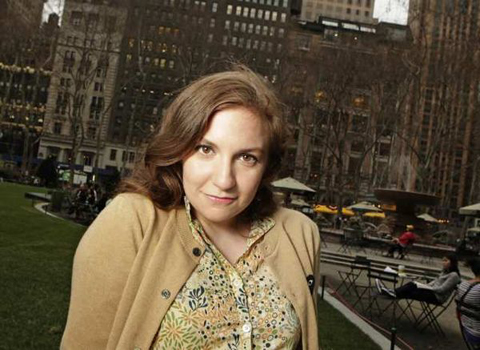
When is a book worth $3.5 million dollars? When it's a
first-time effort by 26-year-old Lena Dunham that hasn't even been written yet,
apparently. Probably the most talked-about publishing news of the year, this
over-the-top offer for a 66-page proposal (with illustrations!) has been
polarizing critics, publishing pros, and other authors since it was announced last Monday. On one hand, Dunham may be young, but she isn't exactly untried:
the snarky-funny daughter of New York
artists, Dunham is already a filmmaker and essayist, with pieces published in
the New Yorker and Rookie. More notably, she's also the
writer, creator, and star of the HBO niche hit "Girls." But $3.5 million?
Really? It's as if the girl you remember ducking gym class with - you know, the
bookish one? - won the lottery.
And it is a lottery. That money - and some estimates push it
up closer to $3.7 million - is not a fee. It's an advance against royalties. In
other words, it's cash up front that the publisher, in this case, Random House,
is handing over to Dunham in the hope of making it back in sales. And not total
sales - that tidy sum, again, is an advance against royalties. Royalties are the author's share. Figure Dunham will get
the more or less standard 15% from each book sold. Figure $25 for a hardcover,
and that comes to about $3.75 per book. In other words, she'll have to sell
close to a million books before getting any more checks. (Admittedly, this is
pretty rough math. There will undoubtedly be audiobook and film sales and other
factors that may shave a few thousand off the top.) But even though the advance
theoretically comes out of the author's cut, its still cash that the publisher
will have to shell out up front. And, no, despite a recent lawsuit by Penguin
to recoup advances from some authors, it rarely gets paid back.
Basically, this is a huge bet that Dunham will hit it big.
That she'll be the next Tina Fey, for example. Fey's book, Bossypants, got an advance of $5 million, came out in April, 2011,
and sold a million in its first six months - and it's still selling close to
3,000 copies a week. Dunham and Fey are both smart, funny women writers, right?
Yeah, but so is Sarah Silverman. She got $2.5 million for what became "The
Bedwetter." Except that her "The Sarah Silverman Program" was cancelled by
Comedy Central the month before the book was published, and her book, a memoir,
ended up selling fewer than 60,000 copies, according to Nielsen BookScan.
(BookScan doesn't count ebooks or audiobook, but is generally considered to
account for 75% of total sales.)
It could even be worse. Following the runaway bestselling
success of Audrey Niffenegger's 2003 debut "The Time Traveler's Wife," Scribner
put down $5 million for the author's second novel, back in 2009. Total sales on
that? Fewer than 250,000; good numbers for some authors, but chump change after
an advance that big. That debacle prompted the New York Times to note that seven out of ten books do not earn back
their advance.
Publishing wasn't
always a high rollers' game. John Milton
was reportedly paid five pounds for the right to sell Paradise Lost, and that same New
York Times piece cited $30,000 as a rough average advance three years ago
(a number that I, as an author with several author friends, agree is still more
or less right). Even the so-called big names of literary fiction don't
necessarily get much more: Dave Eggers announced, in his preface, that he got
$100,000 for A Heartbreaking Work of
Staggering Genius.
The craziness we're seeing now is the culmination of a trend
that started back in the 1970s, when celebrity agents started bragging about
the money they could get up front for big-name authors like Philip Roth and
Norman Mailer. But with the explosion of celebrity authors and social media,
any sense of balance has gotten lost.
Books, especially those by television comedians, started getting crazy -
topping out with the $7 million Bantam shelled out in 2008 for Jerry Seinfeld's Seinlanguage.
Of course,
Seinfeld - like Fey - had already had years of exposure and success behind him.
Proponents for Dunham point out that she, too, has a ready-made audience: with
more than 360,000 followers on Twitter and 106,000 on Instagram, she's got a
half a million readers primed already. Will that audience, used to reading
bite-size 140 character quips for free, shell out for a hardcover book? A year
from now, when Dunham may no longer be the next big thing? Random House is
betting on it.
Clea Simon is the
author of 11 novels, most recently True Grey (Severn House). She does not get million-dollar advances.
















